Discover 11 hidden attractions, cool sights, and unusual things to do in Marietta (United States). Don't miss out on these must-see attractions: Mound Cemetery, Basilica of St. Mary of the Assumption, and Washington State Community College. Also, be sure to include Fort Harmar in your itinerary.
Below, you can find the list of the most amazing places you should visit in Marietta (Ohio).
Table of Contents
Mound Cemetery
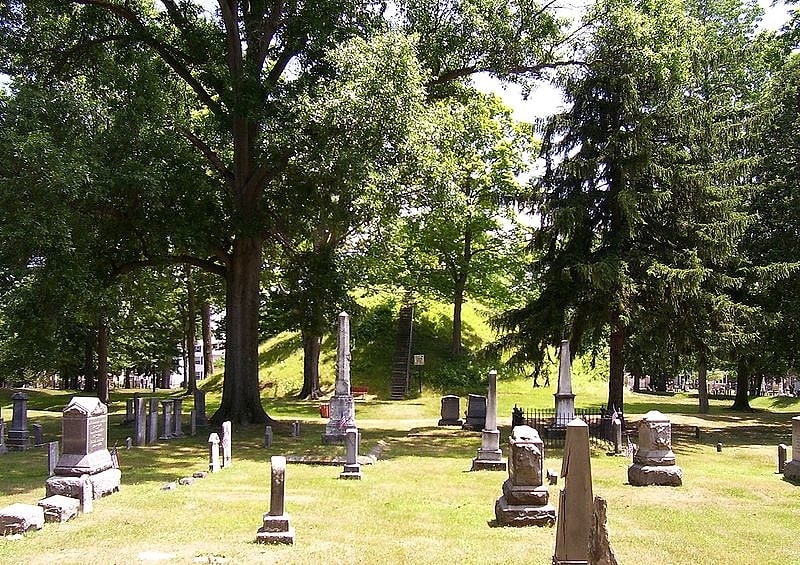
Cemetery. Mound Cemetery in Marietta, Ohio, is a historic cemetery developed around the base of a prehistoric Adena burial mound known as the Great Mound or Conus. The city founders preserved the Great Mound from destruction by establishing the city cemetery around it in 1801.
The city of Marietta was developed in 1788 by pioneers from Massachusetts, soon after the American Revolutionary War and organization of the Northwest Territory. Many of the founders were officers of the Revolutionary War who had received federal land grants for military services. Among high-ranking officers buried at the cemetery are generals Rufus Putnam and Benjamin Tupper, who were founders of the Ohio Company of Associates; as well as Commodore Abraham Whipple and Colonel William Stacy. The cemetery has the highest number of burials of American Revolutionary War officers in the country.[1]
Address: 2131 Round Hill Church Rd, Marietta
Basilica of St. Mary of the Assumption
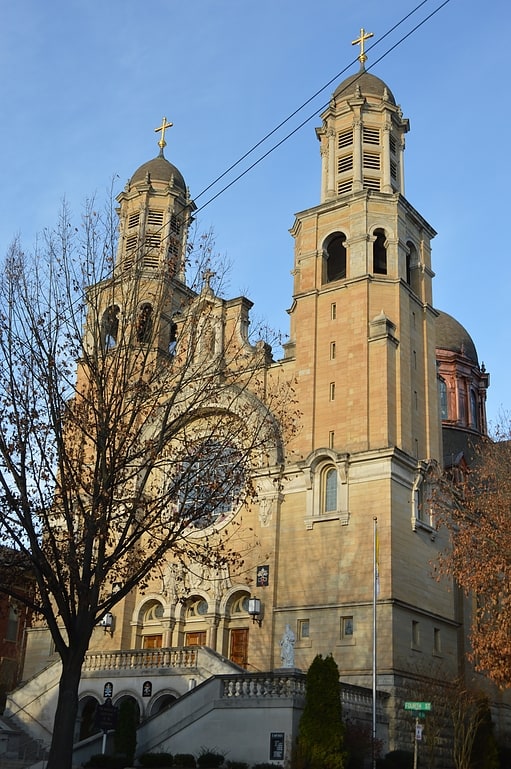
Catholic church in Marietta, Ohio. The Basilica of St. Mary of the Assumption is a Minor Basilica of the Catholic Church located in Marietta, Ohio, United States. It is also a parish church of the Diocese of Steubenville.[2]
Address: 506 4th St, 45750-1901 Marietta
Washington State Community College
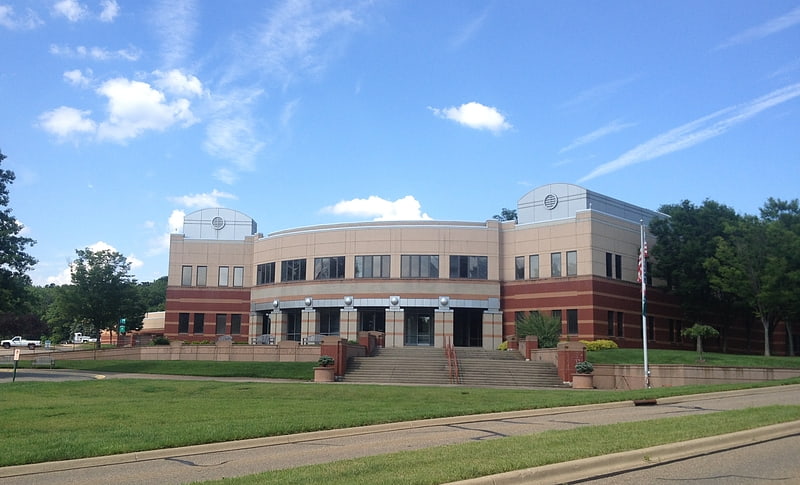
Community college in Marietta, Ohio. Washington State Community College is a public community college in Marietta, Ohio. It was established in 1971 as Washington Technical College and moved to its current location in 1991.[3]
Address: 710 Colegate Dr, Marietta
Fort Harmar

Historical landmark in Marietta, Ohio. Fort Harmar was an early United States frontier military fort, built in pentagonal shape during 1785 at the confluence of the Ohio and Muskingum rivers, on the west side of the mouth of the Muskingum River. It was built under the orders of Colonel Josiah Harmar, then commander of the United States Army, and took his name. The fort was intended for the protection of Indians, i.e. to prevent pioneer squatters from settling in the land to the northwest of the Ohio River. "The position was judiciously chosen, as it commanded not only the mouth of the Muskingum, but swept the waters of the Ohio, from a curve in the river for a considerable distance both above and below the fort." It was the first frontier fort built in Ohio Country.
It is notable as the site for the 1789 Treaty of Fort Harmar between the United States and several Native American tribes.
The presence of Fort Harmar was influential in the founding of Marietta, Ohio in 1788 to the east across the Muskingum. During the one-year anniversary celebration of the founding of Marietta, the physician Solomon Drowne said:
But to whom is this settlement more indebted than to the generous chieftain and other worthy officers of yonder fortress, distinguished by the name of Harmer. With what cheerfulness and cordiality have ye ever entered into every measure promotive of the company's interest. Important is the station ye fill in every respect, and not least in this, that you seem reserved to exhibit to mankind a specimen of that military splendor, which ornamented the arms of America, and would do honor to the troops of any potentate on earth.
The fort was abandoned in 1790 and demolished in summer, 1791, as the area had been redeveloped for other uses, and Marietta expanded to the west side of the river. The exact location of the fort cannot be determined as the Ohio River has been widened by damming, and is believed to be underwater near the mouth of the Muskingum. This area of Marietta is still referred to as Harmar, and the neighborhood has been listed on the National Register of Historic Places as the Harmar Historic District.[4]
Putnam Street Bridge
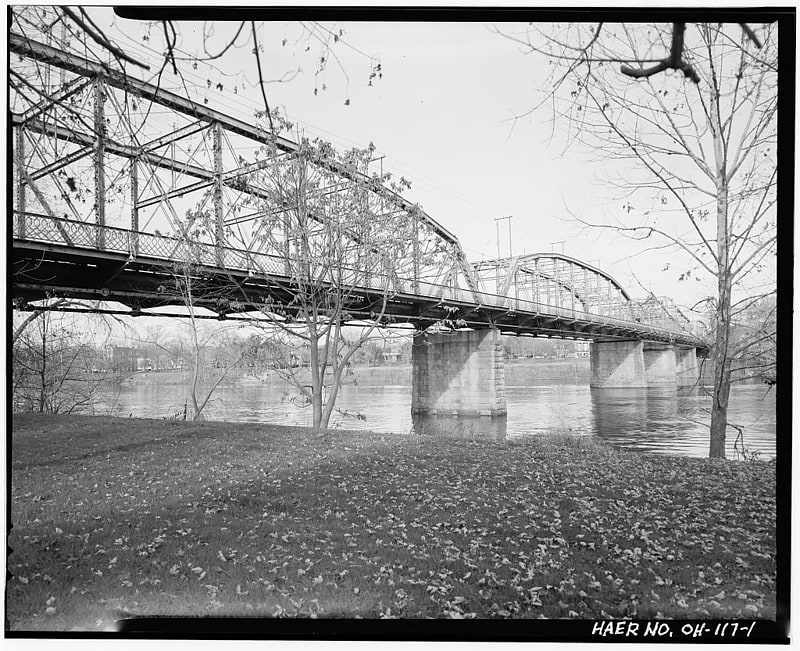
Bridge. The Putnam Street Bridge, also known as the Marietta Bridge, is a historic United States river crossing that connects Marietta, Ohio, with its Fort Harmar district. The original 1880 bridge was the first free crossing of the Muskingum River. The 1913 bridge was a contributing structure to the Harmar Historic District. The bridge crosses the Muskingum, just above its confluence with the Ohio River.[5]
Address: 288 Front St, 45750-2910 Marietta
Williamstown Bridge
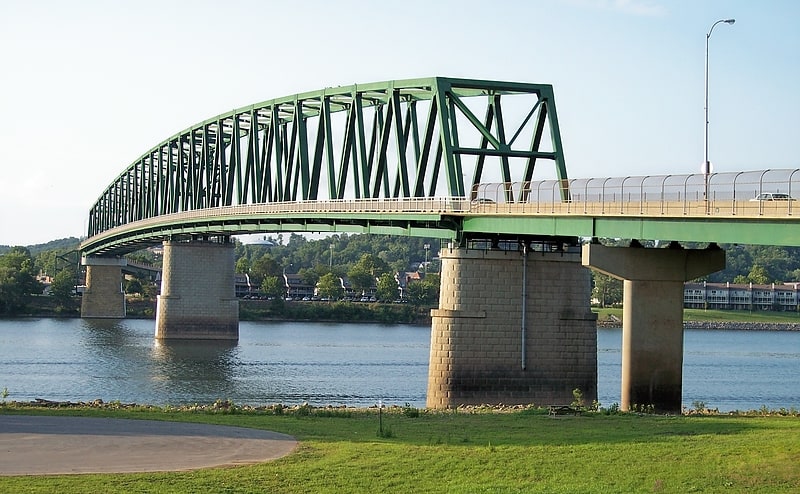
Continuous truss bridge in Williamstown, West Virginia. The Williamstown Bridge is a bridge over the Ohio River between Williamstown, West Virginia, and Marietta, Ohio. The bridge carries West Virginia Route 31 and Ohio State Route 60. U.S. Route 21 was also formerly routed along this bridge.[6]
Children's Toy and Doll Museum

Museum, Specialty museum
Address: 206 Gilman Ave, 45750-2837 Marietta
First Unitarian Church of Marietta
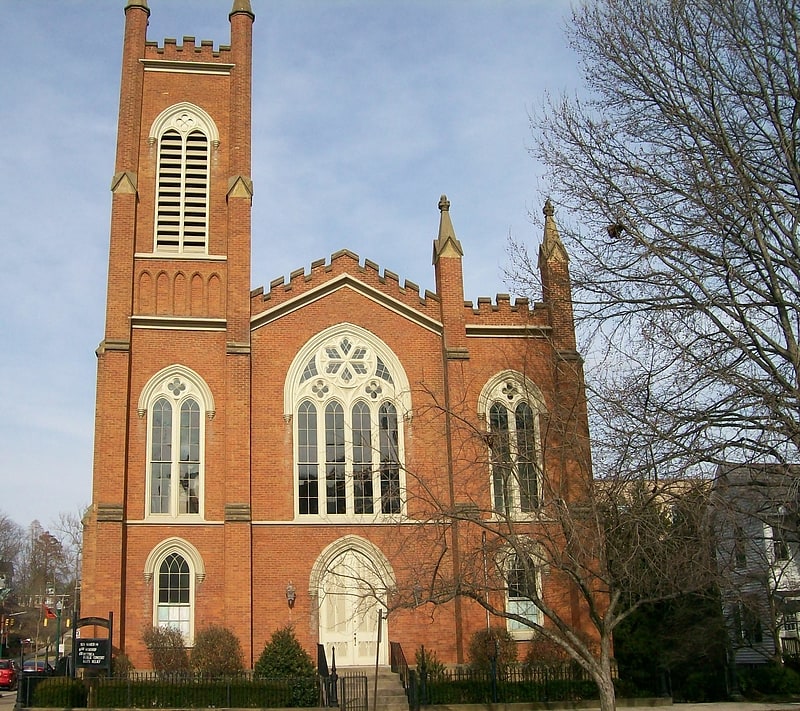
Building in Marietta, Ohio. The First Unitarian Church of Marietta is a historic Unitarian Universalist church in the city of Marietta, Ohio, United States. Founded in 1869, it uses a building constructed in 1858 for one of its two predecessor churches; this building's high-quality architecture has led to its designation as a historic site.
In January 1830, Nahum Ward published an advertisement in the Marietta Intelligencer seeking to find other friends of liberal religion, and the resulting group organized as a Unitarian church in the following month. Members laid the cornerstone of their building in July 1855, and by the time of the building's dedication in June 1857, the congregation had paid approximately $25,000 for lot, materials, furnishings, and labor. The original form of the congregation ceased to exist in May 1869 at its merger with the city's Universalist church, which itself had been founded in 1817 but suffered severe damage to its property in an 1860 flood. The combined church took the name of "First Universalist Church of Marietta".
Built of brick on a stone foundation and featuring additional elements of stone, the First Unitarian Church is a Gothic Revival building. Pilasters divide the facade into three bay, with the doorway in the center, and the side is divided into five. The left bay of the facade, from the perspective of a viewer on the street, is occupied by the base of a square tower nearly twice the height of the rest of the building; while shorter windows in the tower and facade sit below similar second-story windows, and the side windows occupy the height of both stories, tall third-story windows are set near the top of the tower, and the pilasters on all four corners of the tower, similar to those on the rest of the building, are crowned with pointed pinnacles. The building's general shape is that of a front-gable rectangle, with small-size crenellations atop the edges, and the Gothic Revival style is typified by the ogive windows and doorways in the facade and side. Constructed under the direction of architect John M. Slocomb, the building is one of the region's earliest extant Gothic Revival churches. Both stonework and brickwork were completed by local craftsmen, the bricks being made from clay extracted from Sacra Via, the ceremonial walls built by the Mound Builders near the edge of the Muskingum River.
In October 1973, the church was listed on the National Register of Historic Places, qualifying both because of its architecture and its close connection to Nahum Ward, who was deemed a significant resident of nineteenth-century Marietta. It was the last of four Marietta locations to be listed on the Register in 1973, following the Mound Cemetery Mound in February and the Wilcox-Mills House and Erwin Hall at Marietta College in April. It is also a part of the Marietta Historic District, listed on the Register in 1974, which embraces more than two thousand buildings across 900 acres (360 ha) of the city.[7]
Address: 232 3rd St, 45750-3001 Marietta
The Castle
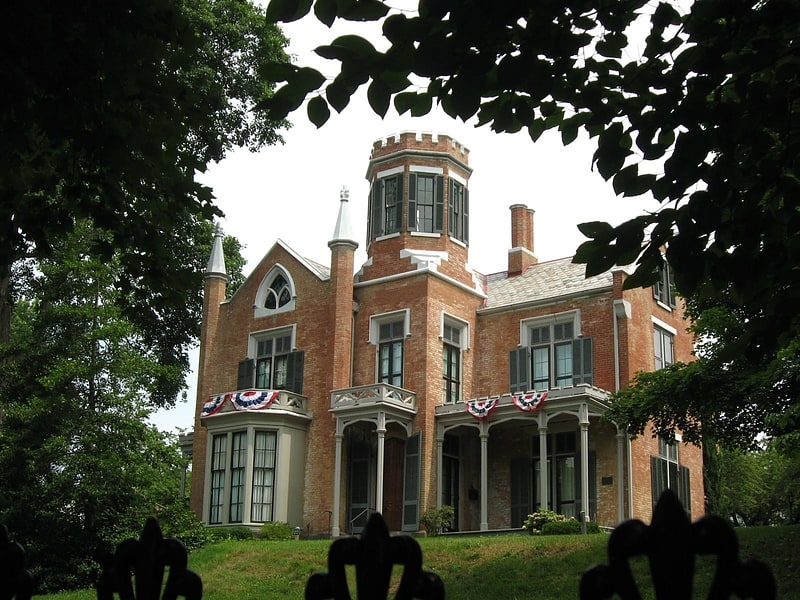
Home in Marietta, Ohio. The Castle is a historic Gothic Revival style home in Marietta, Ohio, USA.[8]
Address: 418 4th St, 45750-2003 Marietta
Campus Martius Museum
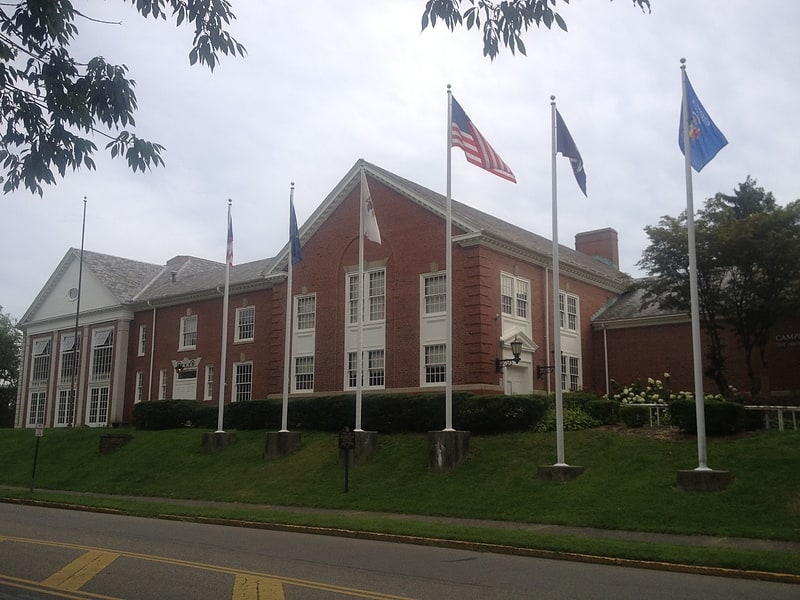
Museum in Marietta, Ohio. The Campus Martius Museum interprets Ohio history.
Campus Martius was the second fortification in Marietta, Ohio and the first primarily for civilian defense. The Rufus Putnam House, incorporated in the Museum is the only remaining part of the fortification. The museum also includes the Ohio Company Land Office. Both are National Register of Historic Places properties. The site is designated as Campus Martius State Memorial.
The museum is located a block from the Ohio River Museum.[9]
Address: 601 2nd St, 45750-2122 Marietta
Ohio River Museum
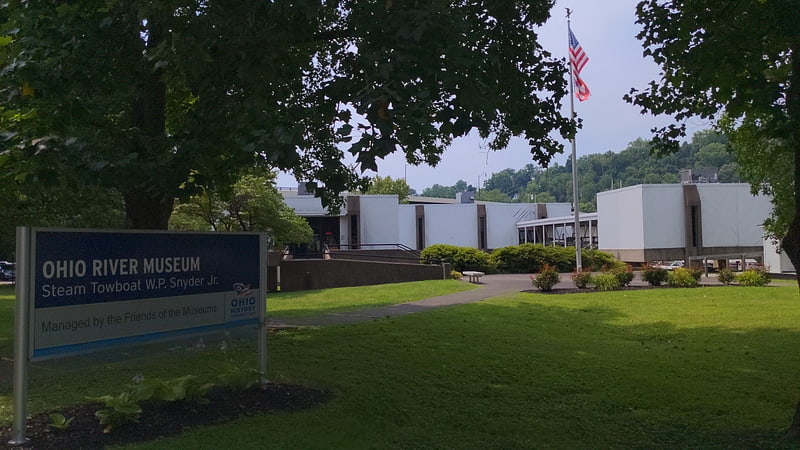
Museum in Marietta, Ohio. The Ohio River Museum is a museum that interprets the history of the Ohio River. The museum is situated on the Muskingum River, near its confluence with the Ohio River, in Marietta, Ohio. Opened on March 16th, 1941, the museum celebrated its 75th anniversary in 2016.
Among the museum's collection is the W.P. Snyder, Jr., the last steam powered towboat on the river.
The oldest remaining pilothouse is from the steamboat 'TELL CITY'. The steamboat was built in 1889 and used to carry passengers and freight on the Ohio River. She was named after the city of Tell City, Indiana on the banks of the Ohio River. She sank on April 6, 1917, in Little Hocking, Ohio. The pilothouse survived the sinking and is on display outside of the museum.
The museum is located a block from the Campus Martius Museum.[10]
Address: 601 Front St, 45750-2131 Marietta